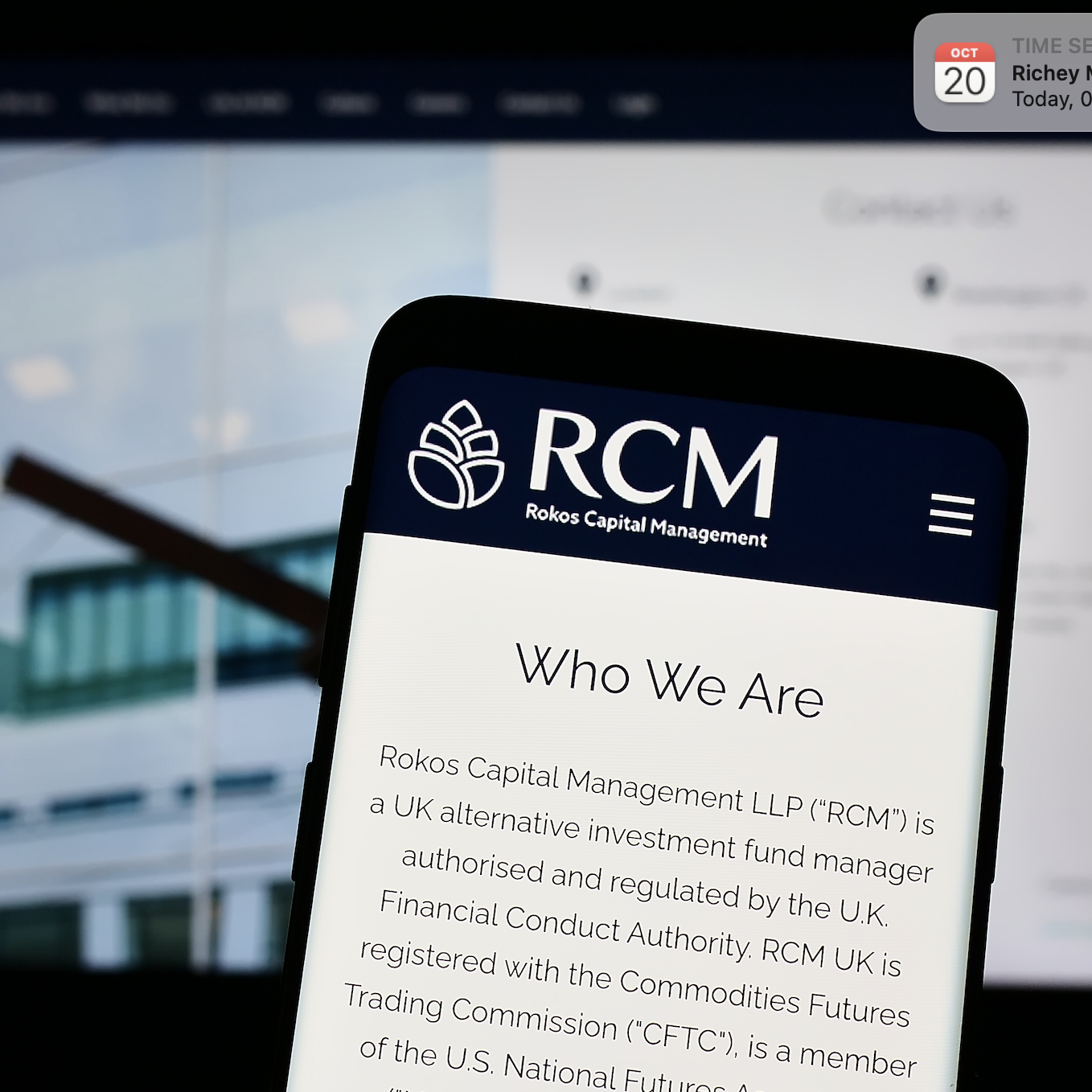By James Williams – “We had our best inflows as a company last year and I think we’ll continue to see inflows into alternative investments in 2013,” confirms Pius Fritschi, Head of Hedge Fund Business Development at LGT Capital Partners.
Last year, the firm’s hedge fund business grew an impressive 20 per cent. One of the main drivers, generally speaking, of increasing allocations among institutions, is the perniciously low interest rate environment the financial community now finds itself in. This is what happens when Mr Bernanke and other central bankers pump the economies with new money and create artificial growth, driving down yields as a result.
“This is forcing investors to diversify and search for new sources of returns so I think there will be continued growth. I’m 100 per cent convinced of that. The only part that is not helping, a counter-trend if you will, is increasing regulation and increasing focus on cost ratios in Switzerland. This is a Switzerland-specific issue where we see things such as cost benchmarking happening, which isn’t helping active managers,” adds Fritschi.
Some managers like Swiss Hedge Capital AG have gone out of their way to become regulated. Its Swiss Hedge Trading Fund became Switzerland’s first ever FINMA-approved single manager hedge fund in March 2011, which the firm launched in conjunction with Swiss & Global Asset Management.
Whether the introduction of revised CISA will prompt other managers to follow suit and move existing offshore fund strategies onshore remains to be seen, but Gerhard Schreiber, founder and managing partner at Swiss Hedge Capital, certainly believes it will become the norm:
“Some smaller managers will suffer in the long-term from the cost impact and will look to be embraced by an umbrella organisation. It will also help institutional investors, who were restricted in their allocation of alternative investments previously, to expand their investments into hedge funds. This is a further benefit of being regulated.”
Following the financial crisis, Swiss Hedge Capital approached FINMA to understand what their requirements were to launch a FINMA regulated fund. It was, says Schreiber, the company’s goal “to stay ahead of the curve and to adapt to the new requirements as quickly as possible”.
The end result is that the firm now manages four funds “pari passu” with the same investment strategy, domiciled in the Cayman Islands, Luxembourg and Switzerland respectively.
“We are regulated by the CSSF for our UCITS IV funds, Swiss Hedge Luxtrade and Swiss Hedge Twintrade, and regulated by FINMA for our Swiss Hedge Trading Fund,” confirms Schreiber.
Under Switzerland’s new regulatory regime will investors be satisfied that the manager is regulated, yet the fund remains offshore? Or will they pressure managers to launch onshore-domiciled products?
UBS Fund Services in Switzerland plans to be at the forefront of increased onshore domiciliation, according to André Valente who heads up the business.
“I’m confident the asset management industry and fund administration industry will grow significantly in the next two to three years here and become a reference point for asset management and asset servicing for onshore and offshore products in Switzerland,” says Valente.
It’s not just administrators who are hoping to benefit from Switzerland’s regulated market.
Alexandre Col, Head of Asset Management at Banque Privée Edmond de Rothschild SA (BPER), notes that one area where FoHF managers could potentially profit from regulation relates to the issue of external fund managers needing to appoint a representative agent if they wish to continue privately placing their products in Switzerland. The obvious downside to this is the cost implication. But as Col explains:
“Under the revised CISA, single manager hedge funds without a local representative will no longer be able to directly approach certain clients. Of course, taking a representative agent will cost time and money and some may renounce. But there is a simple alternative for investors to get access to these managers: by investing through FoHF managers. The Swiss law imposes the use of an intermediary on some clients for fund selection, which I think is a wise way to organise the industry.”
Today’s institutional investors are under huge pressure to hit their investment targets and meet their liabilities. Traditional asset classes can no longer be relied upon too heavily, meaning alternative investments have the chance to shine.
“We’ve seen increased interest in private equity, real estate, infrastructure. In particular real estate because it’s one area that still offers interesting yields. The Swiss real estate market is still in the forefront of institutions’ minds. I expect interest in alternatives to build in the coming months. We launched a FINMA-regulated limited partnership in Switzerland recently, which centres on clean energy. I think you’ll see more of these projects going forward,” comments Valente.
In terms of investor preference for accessing hedge funds, Jan Viebig, CEO of Harcourt Investment Consulting AG, states that clients are asking for more transparent, more liquid and more cost-efficient hedge fund solutions.
“We offer single manager and multi-manager solutions. Both businesses have their own logic. Some clients are interested that we select the best external hedge funds for them. Others believe that systematic risk premia exist in the market which can be captured more cost efficiently, more transparently and with more liquidity through in-house systematic strategies. Clients usually opt for one solution or the other.”
“There are more routes into alternatives now,” adds Craig Wallis, Global Head of Institutional and Fund distribution at GAM. “In Switzerland we have some institutional clients who buy our FoHF portfolios and we have some who ask for bespoke portfolios. There’s no great change. What we have seen is investors increasingly thinking about single manager investments around a core FoHF allocation. Also, investors are using FoHFs like advisers to give them advice on which macro managers might best fit their portfolio, for example. In some respects, FoHFs are almost becoming quasi-consultants.”
According to Jean-Pascal Porcherot, Head of Alternative Solutions Group for Lombard Odier Investment Managers (LOIM), a lot of institutions still look at hedge funds as a separate asset class.
“If you have 30 per cent in equities and 20 per cent in hedge funds, your actual risk exposure to equities could be much higher than 30 per cent. At Lombard Odier Investment Managers, we allocate risk budgets and not capital. This lies at the heart of our investment philosophy,” says Porcherot, and explains why LOIM does not look at hedge funds as an asset class but rather conducts a thorough analysis of the main risk exposures of hedge fund investments.
Managed accounts are not necessarily a panacea for large institutions. Under its 1798 fund range, for example, LOIM’s flagship multi-strategy fund, which has more than USD1billion in AuM, has over 500 individual positions. The question for any investors contemplating a managed account is: “What do you intend to do with this transparency?”
“Many investors still do not have systems and resources to analyse data available when you have full transparency.” As an alternative, LOIM provides its investors with a detailed weekly risk report enabling them to understand the main risks in the fund.
The flagship fund ended 2012 up 13.10 per cent. It is specifically an equity-focused multi-manager fund with capital allocated to eight teams, five of which are running long/short equity strategies, three of which are running opportunistic strategies.
To further appeal to investors, LOIM made the decision last year to simplify its offering.
“As of today we have the flagship multi-manager fund, plus three strategies which we’ve carved out from the fund as a series of single funds. In addition we have the 1798 AOG Energy fund, and the third component of the 1798 range will be global macro,” says Porcherot. Indeed, in February 2013, LOIM hired Tim Yetman to build the global macro team out of London.
Customisation continues along with greater collaboration
Viebig notes that whereas in the past, many investors demanded diversified multi-strategy products, today institutional clients are asking for more specialised solutions: “There is a clear trend to specialisation and customisation.”
Fritschi agrees, adding: “Today you have to be a partner to your clients. You have to provide customised solutions. How you blend different classes and structure products in today’s regulatory environment is essential for a fund provider to be considered as a serious and trusted partner.”
Ten years ago, everyone wanted funds of funds. Now, says Nicolas Rousselet, Head of Hedge Funds at Unigestion, investors are asking for mandates that encompass more than just a return stream:
“They want more involvement in the management of the portfolio. Sometimes they even want to do it entirely on their own. It depends on the investor, but the trend towards collaboration has accelerated in the last two years. That’s important for us at Unigestion where we provide our clients with tailor made mandates and bespoke services. We are not a manager to our institutional clients, but more like a partner.”
Tied closely to this collaborative approach at Unigestion is its research capabilities. When it comes to portfolio construction the firm has traditionally been more concentrated than the rest of the industry, which stems from a belief that returns can increase the more concentrated a portfolio is. To do this effectively requires first-class research capabilities and a deep knowledge of the underlying managers.
Rousselet continues: “In the average portfolio we have reduced the number of managers by one third. Within the same mandate, an over-diversified portfolio will underperform a more concentrated allocation based on our research. Clients that have the most appetite for concentration also outperform those with less appetite. The most concentrated portfolio we have is invested in just four managers. If you compare its performance relative to its peers, it’s one of the best performing long/short equity fund of hedge funds.”
Central to Unigestion’s approach is analysing the risk profile of a portfolio, not the expected returns. Over the last six years, Unigestion has built a framework which its analysts use to predict the behaviour of a fund from a risk perspective. “We consider a range of risk parameters and this provides a robust base on which to construct the portfolio.”
Specialised solutions & return enhancement
With the threat of rising interest rates, investors are looking for ways to diversify their duration risk.
“One area we’ve seen demand grow over the last 12 months has been in insurance-linked strategies. We have a catastrophe bond strategy where demand is outstripping supply quite handsomely. The risks associated with ILS are not associated with the stock market so ILS provides a useful de-correlation benefit. It’s really an extension of the fixed income bucket,” says Wallis. GAM currently manages around USD800million in both a UCITS and offshore catastrophe bond fund.
Viebig confirms that interest in liquid dynamic absolute return strategies in fixed income is clearly building and that the amount of information requests and RFPs received have “reached new highs in the first quarter of 2013”.
One such fund that has been attracting the attentions of Swiss institutions is the Vontobel Absolute Return Bond fund.
“In the last six months, investor susceptibility to rising interest rates has led to strong interest in the fund,” confirms Paul Nicholson, Portfolio Manager, cash bond strategies for the fund. “Investors are starting to recognise that they are vulnerable to rising interest rates and credit spreads widening if a deflationary event happens, and they need to diversify those risks. Our fund is designed exactly to do that.”
The fund uses cash management combined with three alpha strategies, which aim to produce a straddle-like pay-off. For example, if interest rates start to rise, the fund uses a momentum and trend-following systematic model to take advantage as the trend strengthens. Conversely, if a deflationary event occurs and credit spreads widen, the fund can also profit by building short positions.
“In currencies, you’re seeing competitive devaluations going on. Japan is the main headline at the moment with respect to its inflationary target and represents an interesting opportunity for the fund because it’s not just the Yen, its other currencies that will be affected by Japanese policy, such as the Korean Won. That’s a theme we think is very exciting right now,” adds Nicholson.
GAM runs more than USD15billion in fixed income strategies which include the GAM Star Dynamic Global Bond strategy – co-managed by Tim Haywood and Daniel Sheard. Referred to as a “go-anywhere” fund, this absolute return fund is also becoming more popular with investors eager to rotate out of purely directional fixed income strategies.
“Investors still like fixed income, but they want it run in a more active manner. This fund has the ability to invest in high yield bonds, government bonds (developed and Emerging Markets), corporate credit, currencies and use derivatives to change interest rate and credit exposures. The fund aims to make Libor plus 3 to 5 per cent, which I think directional fixed income products will struggle to produce this year,” explains Wallis.
Fritschi believes that the biggest return enhancement opportunities are in the more illiquid part of the investment universe such as private equity. Last year, LGT raised a USD2billion secondary market private equity fund, which underscores the interest in this alternative asset class. “Clients understand that beyond this volatility and liquidity-driven investment market, buying into solid small and mid-sized businesses that are well run in Europe makes sense.”
A second private equity fund is focused on the Asian growth story with Fritschi noting that compelling opportunities exist in countries like China where companies are able to tap into the rising middle class. “It’s clear that companies that cater for the burgeoning middle class will continue to grow over the next 20 years,” says Fritschi.
Another interesting area is private debt, or direct lending. Banks are cutting back on loan origination because of Basel 3 creating plenty of good loan book portfolios in the secondary market for the likes of LGT to explore.
“We launched our first credit/distressed debt opportunity fund in 2008. It raised CHF250million and did fantastically well between 2008 and 2011. We focused on buying sub-prime loans and generated annualised returns of 19 per cent.
“This year, we launched a second fund. We are still in the capital raising phase but interest is strong. If you look deeper into the credit markets, providing equity or debt to companies who no longer have funding channels open to them is a highly interesting space. Not all Spanish companies, for example, are bad.”
One solution that doesn’t seem to be currying favour among fund providers is that of hedge fund UCITS.
Says Rousselet: “I think funds of UCITS hedge funds have been underperforming quite a lot and we don’t think the market is deep enough to add value.” An opinion that is echoed by BPER’s Alexandre Col:
“What we don’t do, at least for the time being, is offer funds of UCITS hedge funds as it’s still not yet the right time to do it. I don’t believe it is a good idea. Maybe I will change my mind in a year’s time when there are more managers, more strategies available that offer compelling solutions for investors, but for the time being it is a route I don’t want to take. There are too many constraints with UCITS hedge funds.”








